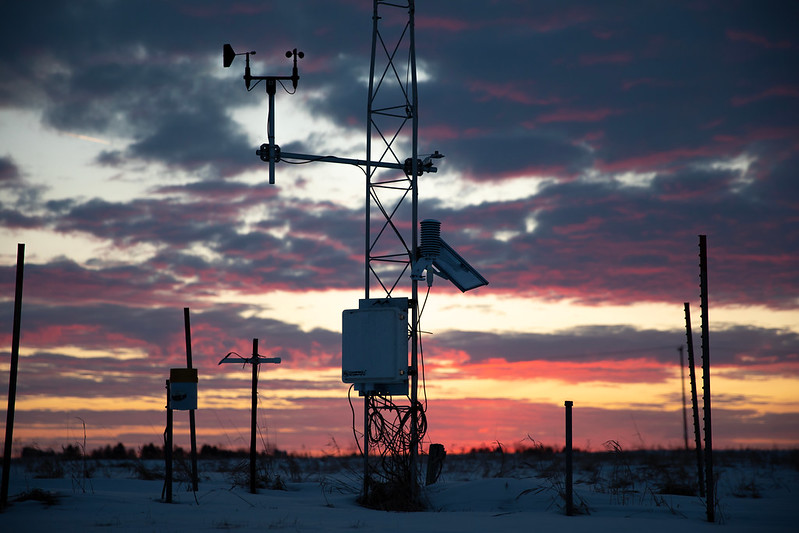
Wisconsin’s wild weather has been on full display in 2023. Weather can have an outsized impact on daily lives and the economy. A team at the University of Wisconsin–Madison is making it easier than ever to access local weather data and make informed decisions.
A team of University of Wisconsin–Madison researchers has been transitioning 14 weather stations across Wisconsin to a new Wisconsin-based program – called Wisconet. In the coming months, Wisconet will be installing new stations in Dane, Sauk, Jackson and Clark counties. This is part of the planned expansion to 90 weather stations, including at least one station in every county.
“A common phrase is, ‘If you don’t like the weather, just wait five minutes.’ We’ll know how the weather changes because Wisconet stations are providing live weather data every five minute. This supports local meteorologists, researchers, farmers, as well as the people of Wisconsin,” says Chris Vagasky, research program manager for Wisconet.
Each Wisconet station will report temperature and relative humidity, barometric pressure, and wind speed and direction. They will also report liquid precipitation, solar radiation, leaf wetness, and soil moisture and temperature measurements. Data is available for viewing at the Wisconet website: wisconet.wisc.edu.
Wisconet is supported by a $2.3 million grant from the University of Wisconsin–Madison’s Wisconsin Rural Partnership initiative. The grant is part of a broader $28 million USDA-funded Institute for Rural Partnerships. The institute aims to promote equitable, resilient, and prosperous food and agricultural systems and expanded opportunities for rural community development. Additionally, Wisconet also received $1 million in financial support from the Wisconsin Alumni Research Foundation.
“We are continually developing and updating our data and tools online,” Vagasky says. “Plant growth and pest and disease models, heat models, and precipitation statistics are all things we have in mind to help Wisconsinites respond better to our ever-changing weather.”
Wisconsin saw such changes this spring. After a record wet January – April, the state experienced the third-driest May-June in the last 129 years. This led to rapid development of drought across the state. Lack of precipitation during the growing season creates challenges for farmers and growers. But new soil moisture measurements from Wisconet will improve irrigation decisions and better inform drought monitoring.
“Wisconet will measure soil moisture at five depths from just two inches below the surface all the way to 40 inches below ground,” explains Vagasky. “This added soil moisture data will let growers know how much water is available to their plants. It will also help researchers understand how quickly the ground is responding to increases or decreases in precipitation. Thus improving our awareness of short- and long-term droughts.”
The Wisconet team continues to identify additional locations, develop novel tools and models for the website, and field new stations. They aim to install 75 new stations by 2026. Contact Chris Vagasky at [email protected] if you are interested in hosting a station on your property.

Leave a Reply